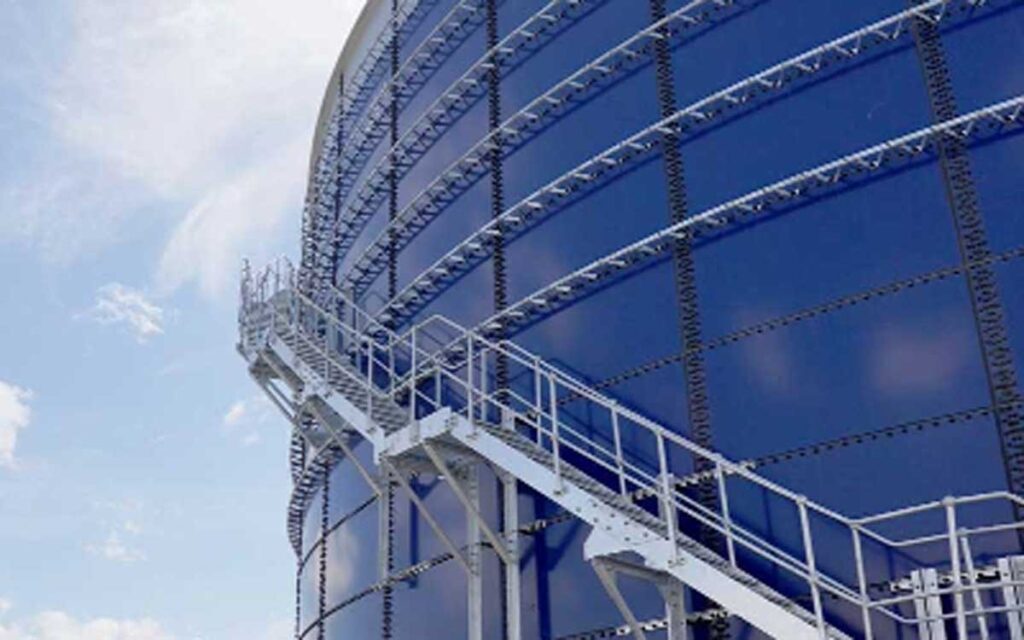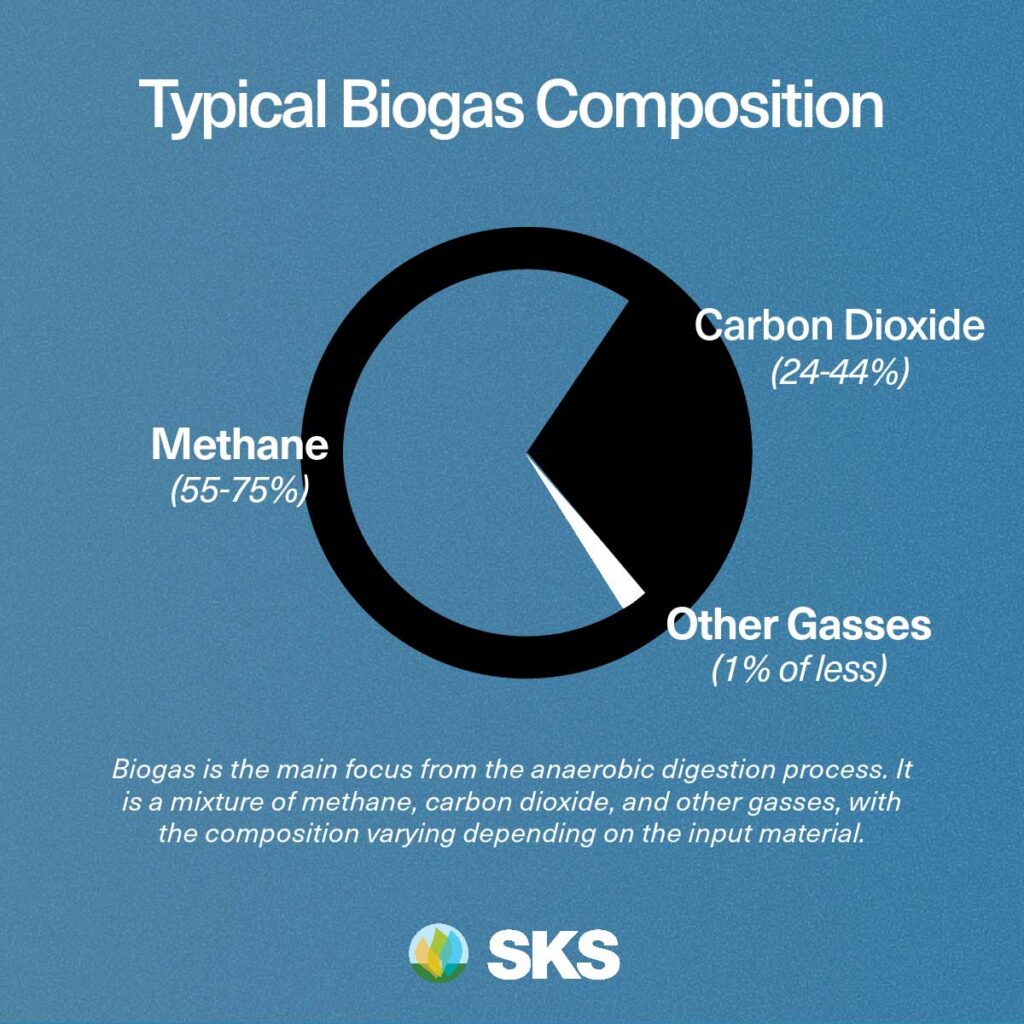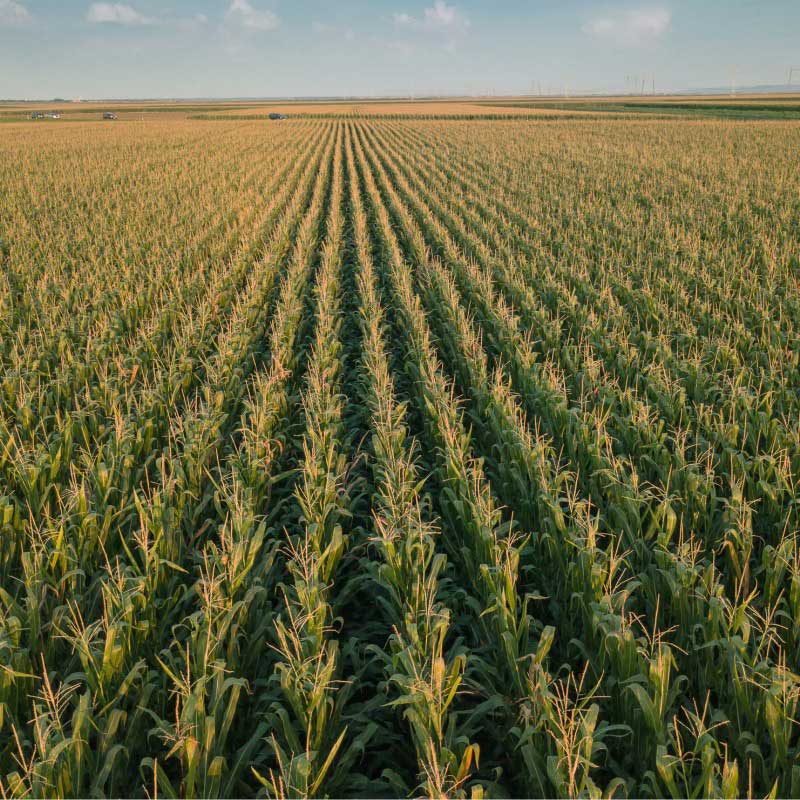Biogas is a renewable energy source that is produced when organic matter, such as food scraps or animal waste, is broken down by bacteria in an oxygen-free environment. This process is called anaerobic digestion.
The microorganisms that breakdown organic matter produce a mixture of gasses, primarily methane and carbon dioxide. This mixture of gasses is called biogas. Biogas is considered a renewable energy source with many uses such as generating heat and electricity and powering vehicles.
Dairy farms, water resource recovery facilities, food waste generators, and landfills each present tremendous opportunities for the production of biogas since they each generate large volumes of organic matter.
In this post we’ll cover how biogas is produced, the outputs of biogas production, and the main uses biogas has to offer.
The Biogas Production Process: An Overview
Biogas is produced in an anaerobic digester. At the beginning of the process, large tanks are filled with organic material.

The organic material is mixed in these air tight tanks and warmed to a temperature in the range of 95-131 degrees Fahrenheit (35-55 degrees Celsius). Systems operating in the temperature range of 95-105 degrees Fahrenheit are considered mesophilic systems, whereas systems in the range of 115-131 degrees Fahrenheit are considered thermophilic.
The heat helps to activate microorganisms that breakdown organic matter. The naturally occurring microbial community (microorganisms) involved in the digestion process will be discussed in a future post.
During the digestion process, biogas and digestate are created. Both of these materials have many beneficial uses.
The time it takes for the breakdown of the organic material in the anaerobic digester depends on the digestion system. In general, it will take between 14-40 days. However, retention times will vary depending on the composition of the organic matter.
Primary Outputs of Biogas Production: Biogas & Digestate
The anaerobic digestion process results in two valuable outputs – biogas and digestate.
Primary Output: Biogas
Biogas is the main focus from the anaerobic digestion process. It is a mixture of methane, carbon dioxide, and other gasses, with the composition varying depending on the input material. The typical composition of biogas is 55-75% methane, 24-44% carbon dioxide, with the other gasses making up 1% or less of the mixture.

Before biogas can be used, it typically needs to be purified to remove other gasses and impurities. The purified biogas, or renewable natural gas (RNG), can then be used in the same way as natural gas.
The purification process for RNG typically involves removing carbon dioxide, hydrogen sulfide, oxygen, nitrogen, and water vapor from the biogas in order to meet national pipeline requirements.
Secondary Output: Digestate
Digestate is a solid byproduct of the anaerobic digestion process. It is the remains of the original input material that was not broken down by the microorganisms. Digestate can be used to create nutrient-rich fertilizer, livestock bedding, and other soil amendments such as compost.
Digestate contains all the nutrients of the original organic material, but in a form that is more accessible to plants than raw animal manure. According to the Coalition for Renewable Natural Gas, this makes digestate a more effective fertilizer. Digestate is also more easily absorbed into soil, reducing runoff into local water bodies.
How Biogas Can Be Used
Biogas is a versatile fuel with a wide range of applications. The most common uses of biogas include:
- Fueling vehicles: Biogas can be used to fuel vehicles, such as cars, buses, and trucks.
- Generating heat and power: Biogas can be used to generate heat and power for homes, businesses, and communities.
- Fertilizing crops: The digestate, a solid byproduct of biogas production, can be used as a fertilizer or soil amendment.



The use of biogas is growing rapidly in the United States and around the world. According to the American Biogas Council, the U.S. has over 2,300 sites producing biogas in all 50 states. This number is expected to grow in the coming years, as the demand for renewable energy increases.
Leverage SKS Development’s Biogas Expertise
Overall, biogas is a promising renewable energy source with a number of potential benefits. It is a sustainable, clean-burning, and cost-effective fuel that has the potential to make a significant contribution to our energy needs.
SKS Development has worked with several dairy farms to build methane digesters that produce biogas. These projects have helped dairy operations realize the many benefits of biogas, including:
- The production of renewable natural gas (RNG) that can be injected into the nearby pipeline.
- Sustainable bedding material for livestock.
- Organic fertilizer to improve soil health.
The De Saegher anaerobic digester project is seeing the many benefits of the anaerobic digestion process. In addition to producing RNG, the project is also producing sustainable bedding material and organic fertilizer.
With decades of experience developing, building, and managing biogas facilities, SKS Development has the expertise to deliver the right plan for your waste-to-energy facility. If you are interested in understanding the potential of biogas at your site, please reach out to the SKS team.
